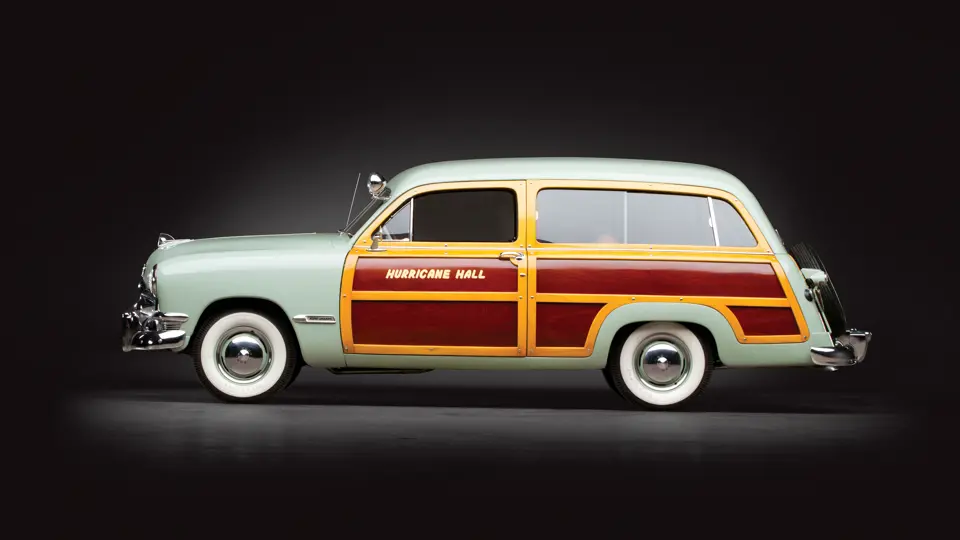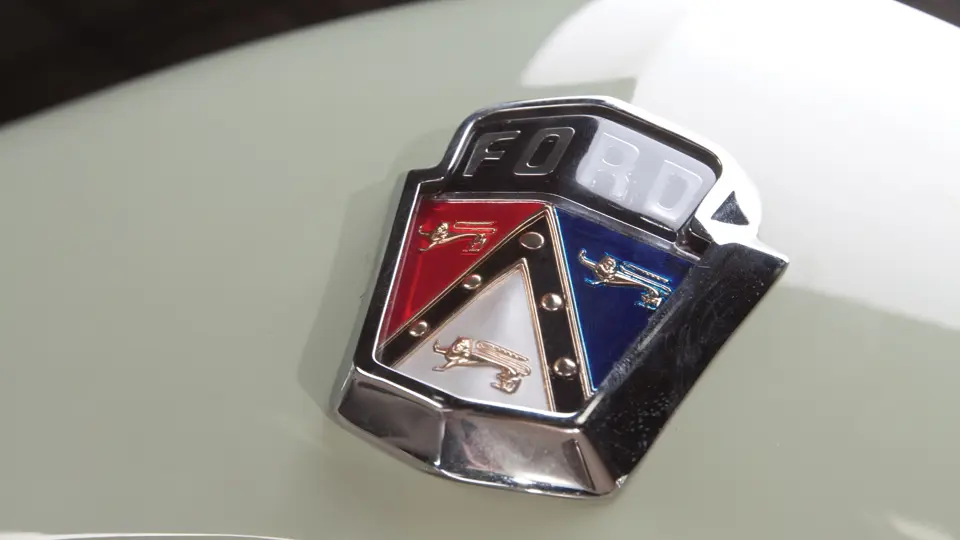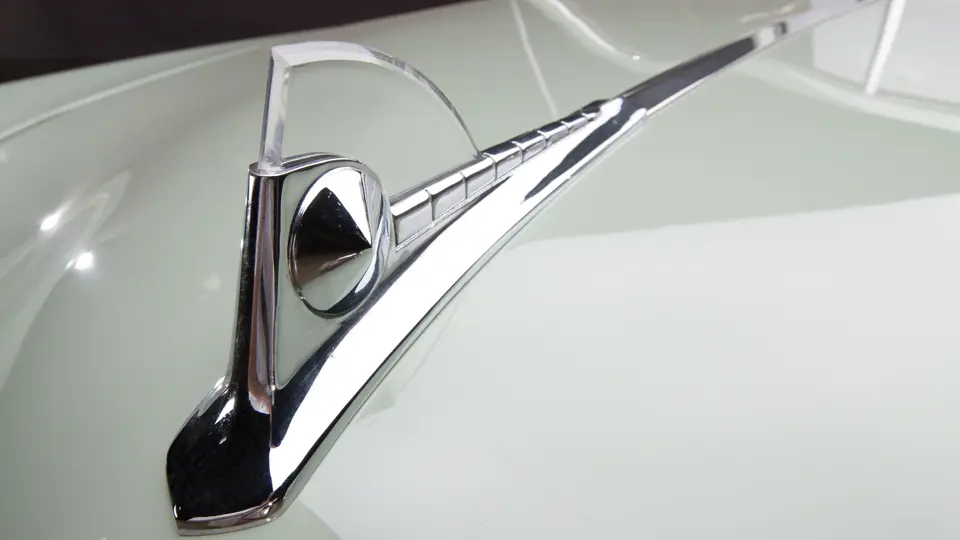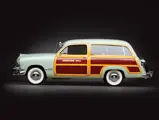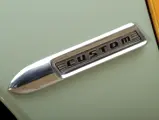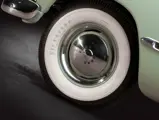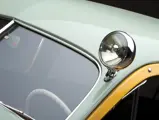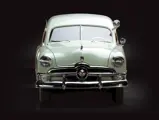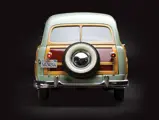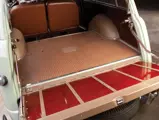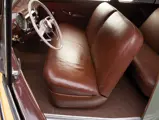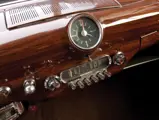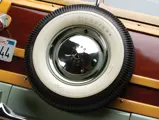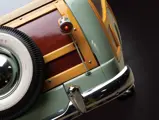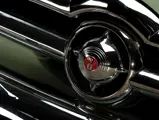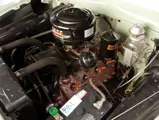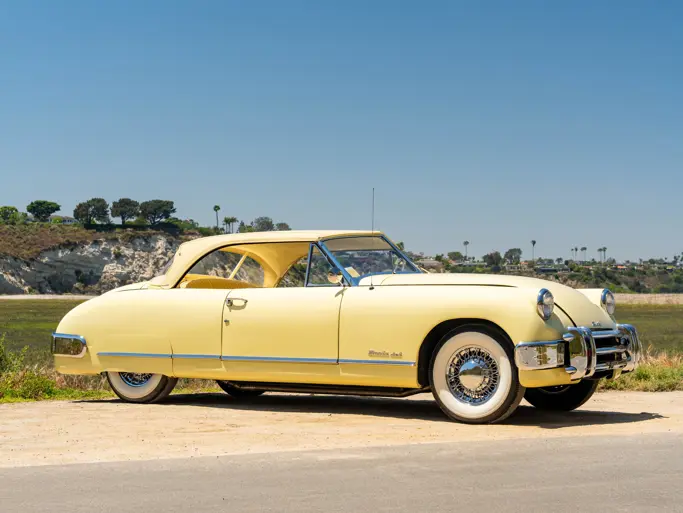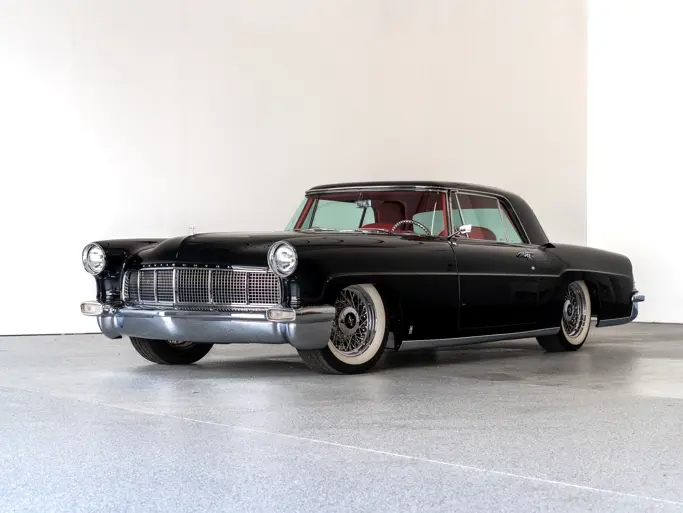Model 0BA. 100 bhp, 239.4 cu. in. L-head V-8 engine, three-speed manual transmission, coil-spring independent front suspension, live rear axle with semi-elliptic leaf springs, and four-wheel hydraulic drum brakes. Wheelbase: 114 in.
In May 1950, to keep pace with competitors’ new developments, Ford introduced a revised model of their station wagon. The second seat could now be folded flat for load space, although the third seat still had to be removed. The side windows were changed so that only the forward pane slid open, and a steel stamping replaced the wood tailgate. The side panels were now also steel and featured Di-Noc imitation wood grain. Although the name did not appear on the cars, the new Ford wagons received the new name of Country Squire.
This early 1950 Station Wagon, formerly of the famed Art Astor Collection, was built prior to the Country Squire introduction, and as such, it has the wood tailgate, mahogany side panels, and three-pane sliding rear windows. It has had received some cosmetic restoration, which exhibits overspray on the underbody, but the overall effect is pleasing. It is equipped with a radio, heater, electric clock, windshield washers, and a high-mounted door-post spotlight. The paint is the original Hawthorne Green.
The doors are lettered “Hurricane Hall.” According to Mr. Astor, its first owner was actor Jon “Hurricane” Hall, who got his nickname from his starring role in the 1937 film The Hurricane. After a successful movie career, he was one of the first actors to switch to the new medium of television, where he was quite popular with the younger set as Ramar of the Jungle. He reportedly used the car in his orchards, although this is not documented.
The engine compartment is nicely detailed, with dual exhaust, and the car received new, correct cloth wiring while in Mr. Pack’s ownership. However, the removable third seat is not present. Due to their greater wood content, early 1950 Ford wagons did not survive in such numbers as their Country Squire counterparts. This handsomely patinated survivor evokes the era when Hollywood evolved from film to television.




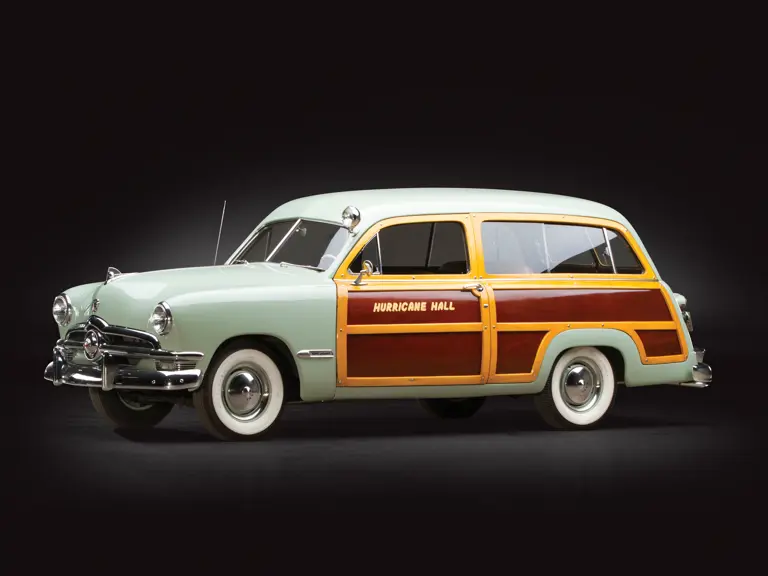
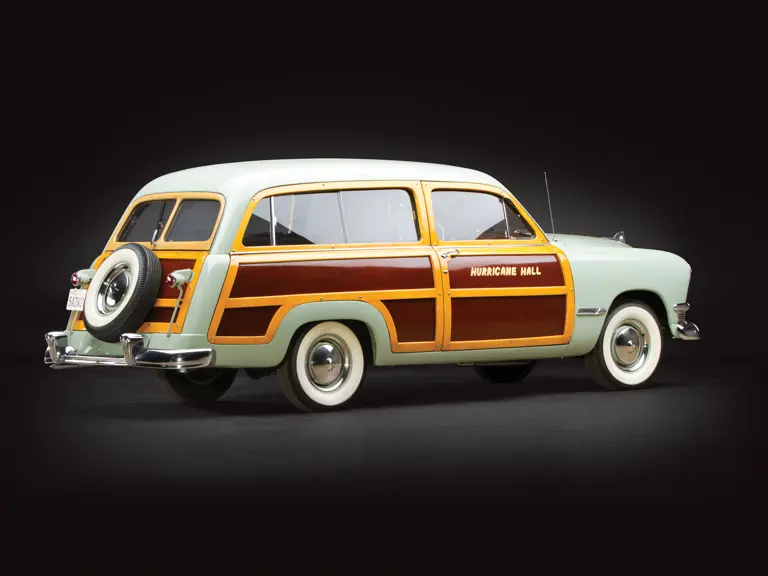
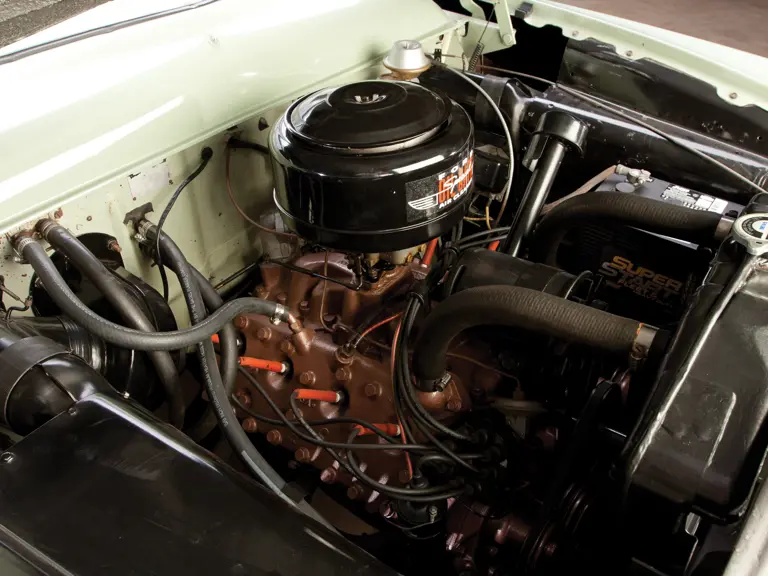

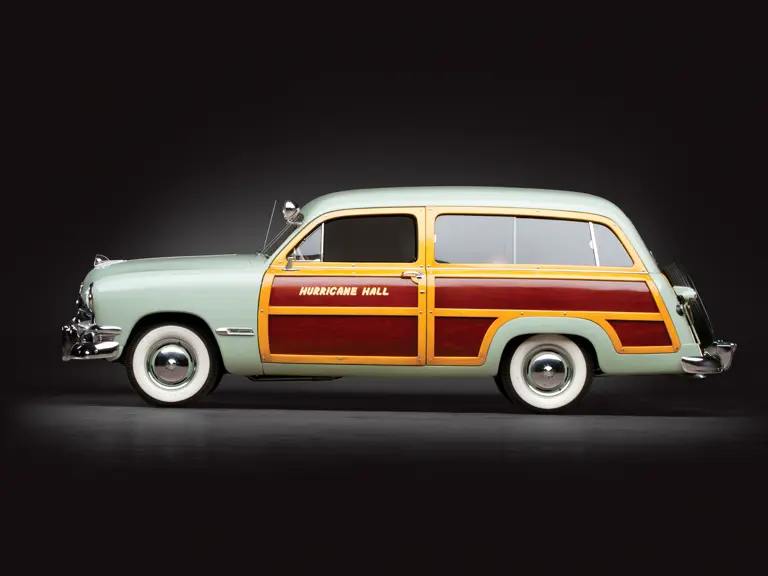
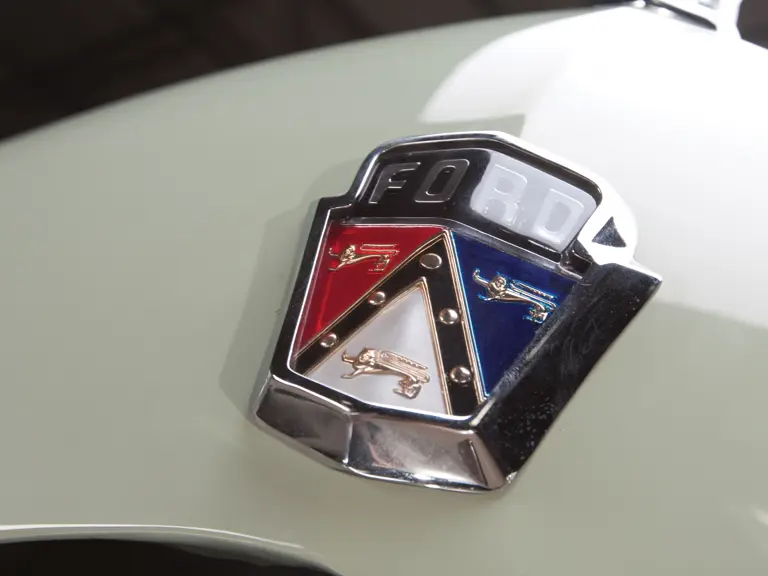

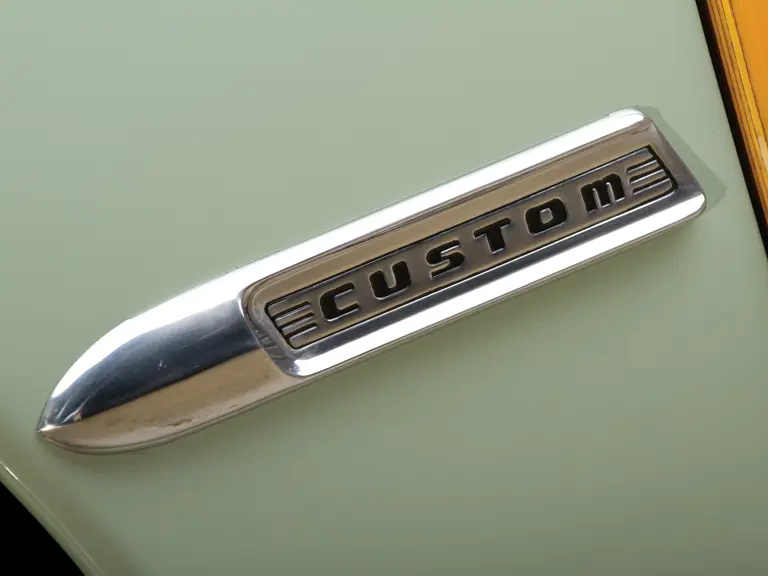
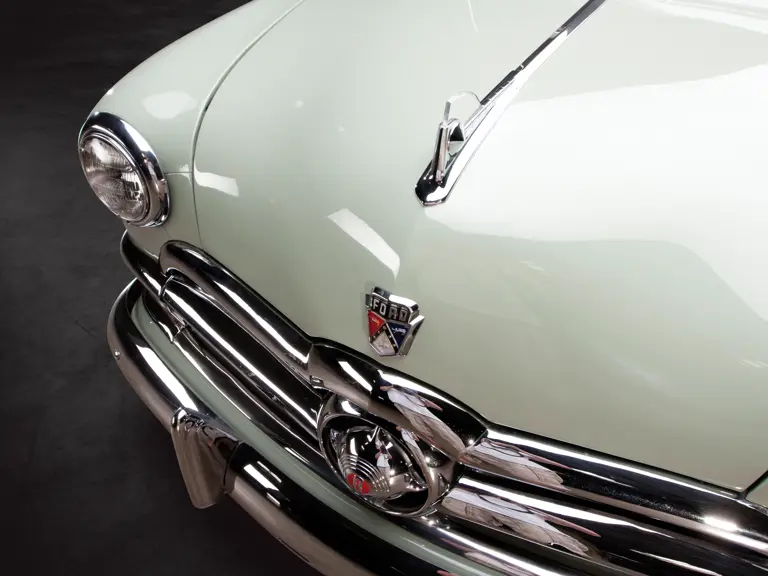
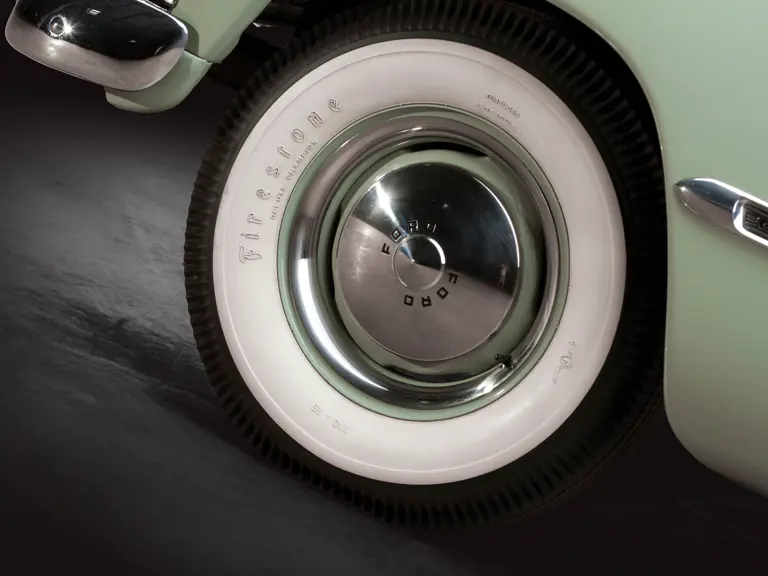
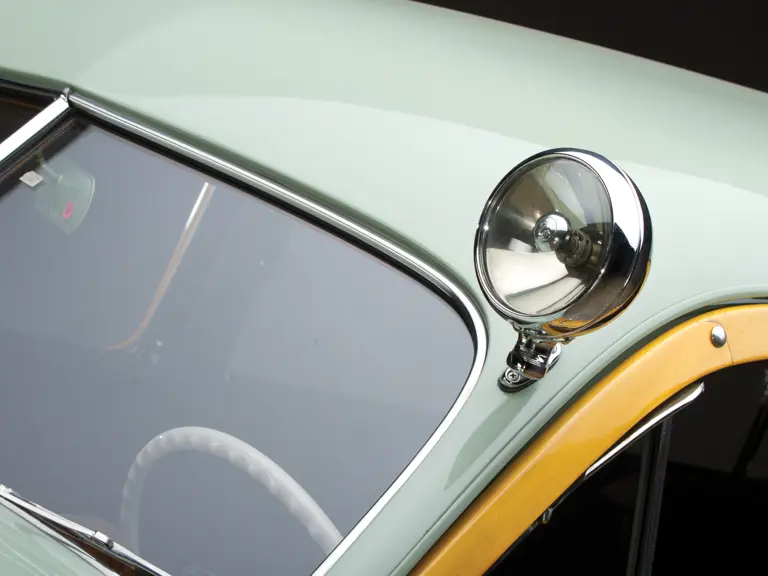
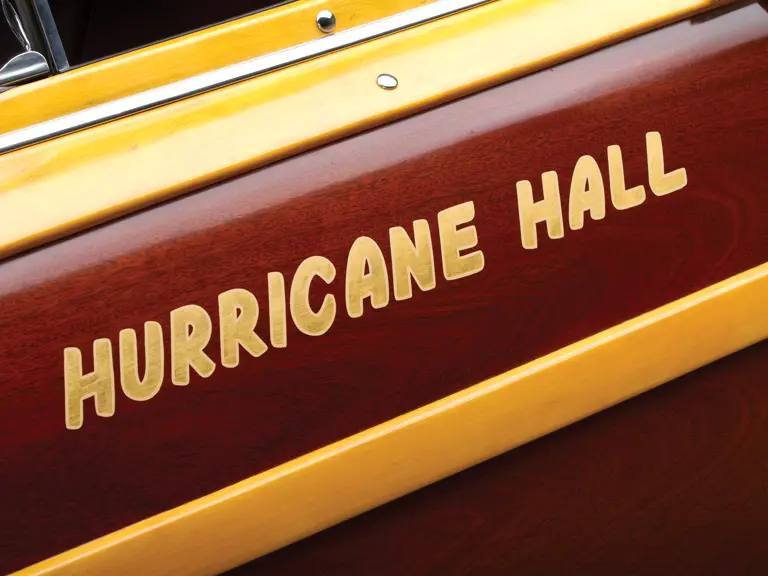
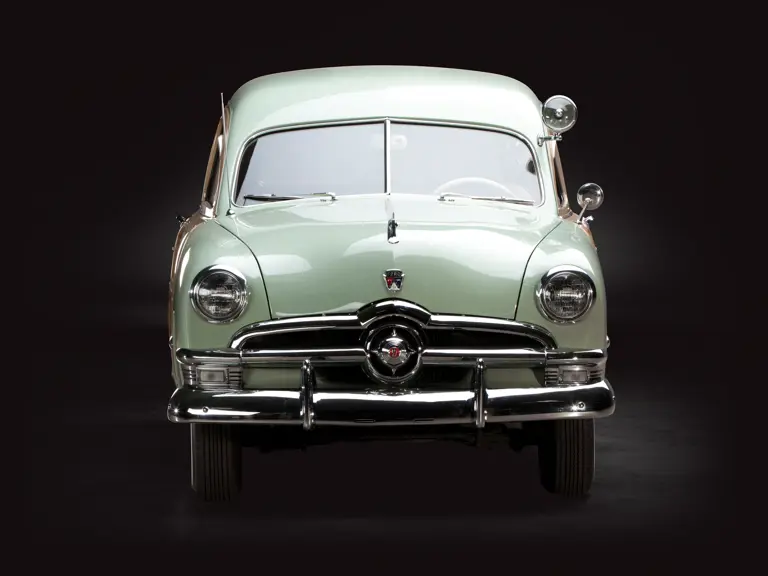
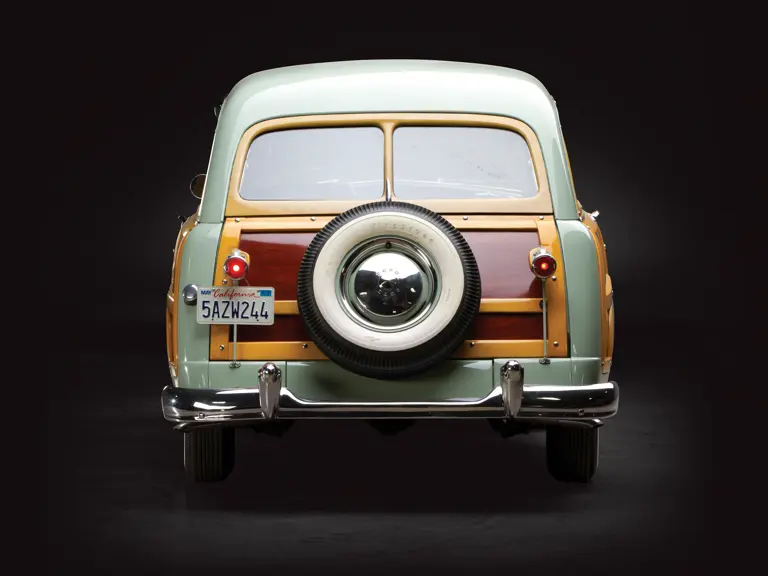
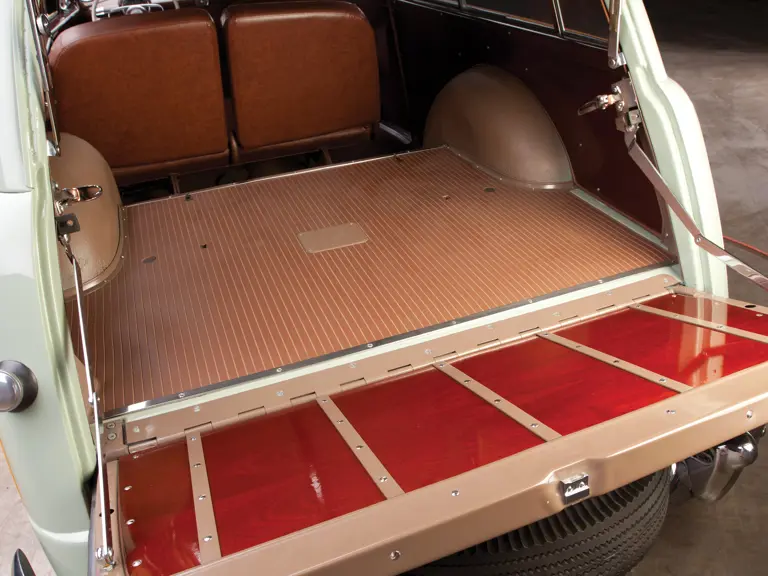

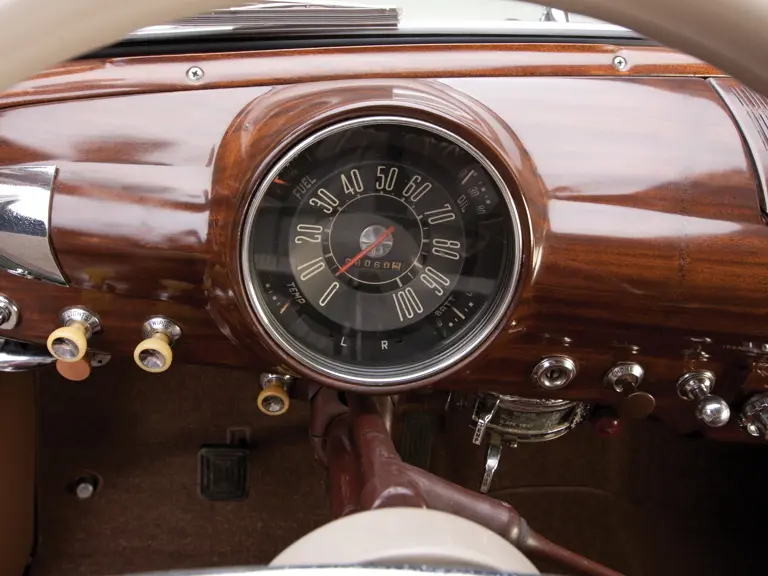
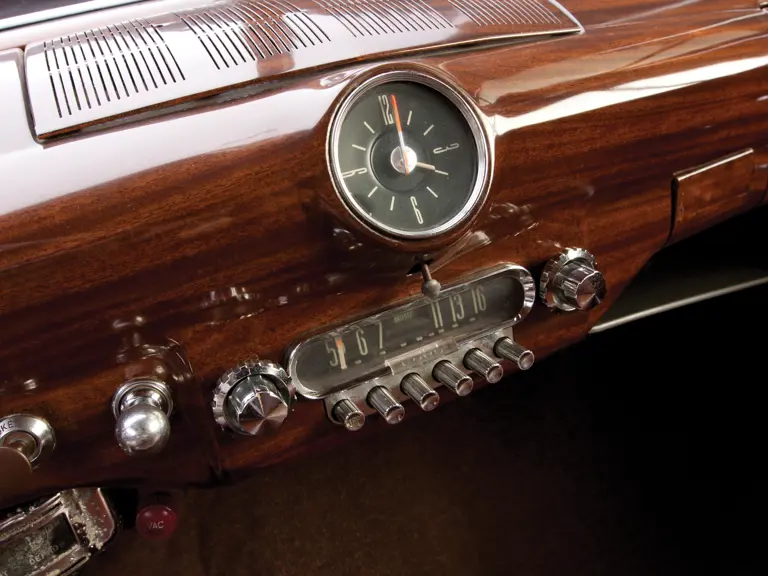
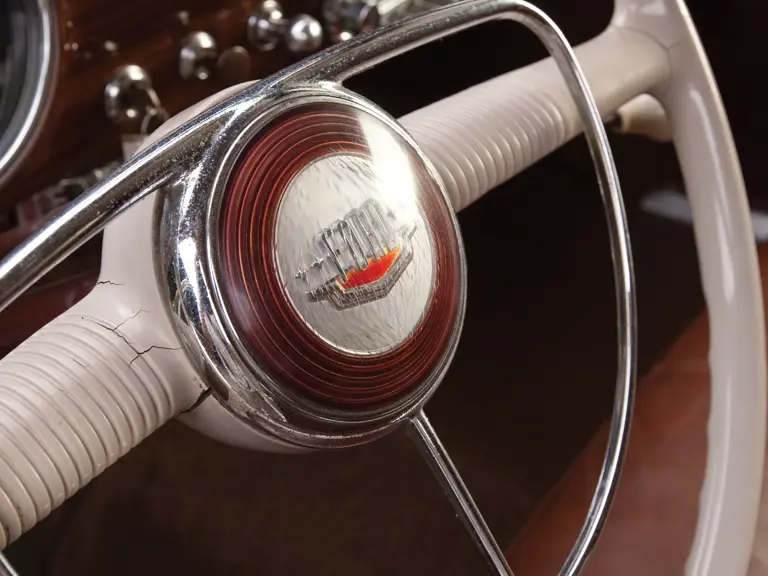
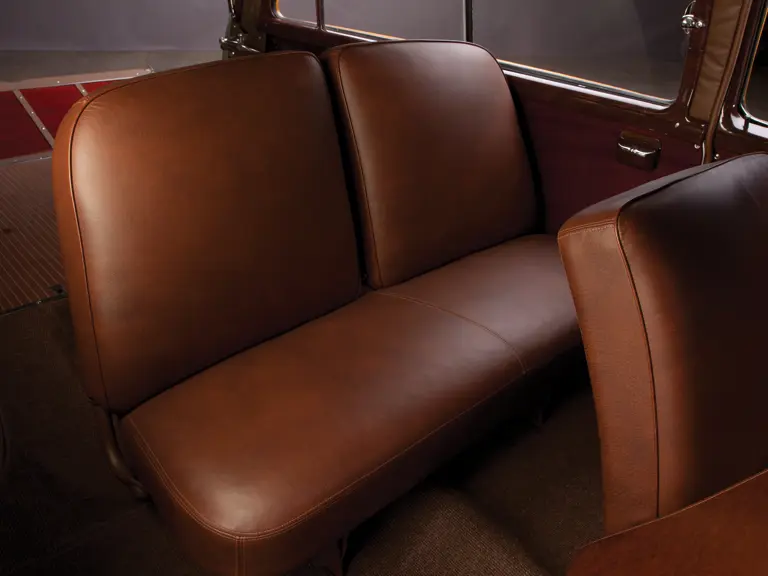
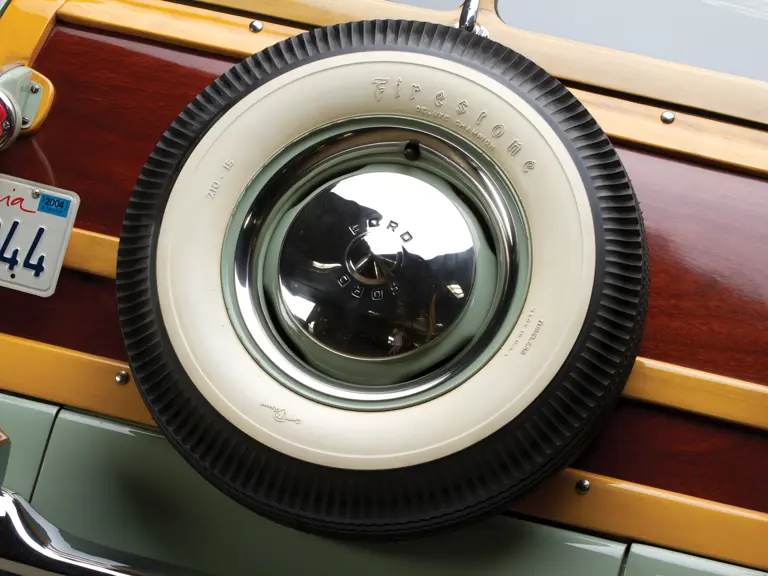


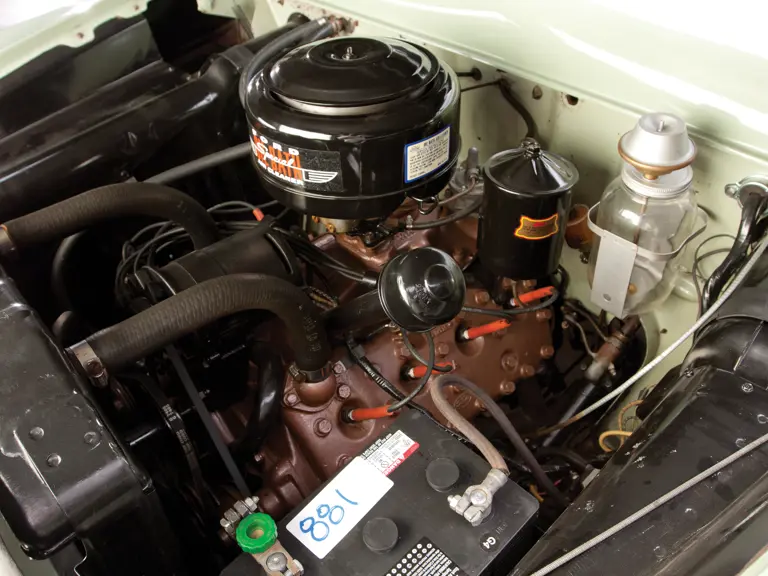
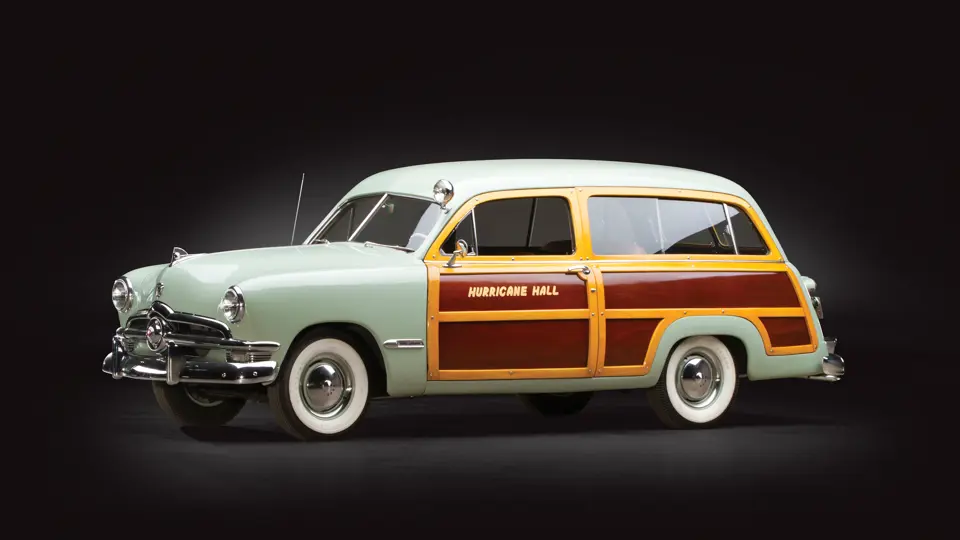
 | Farmer's Branch, Texas
| Farmer's Branch, Texas
